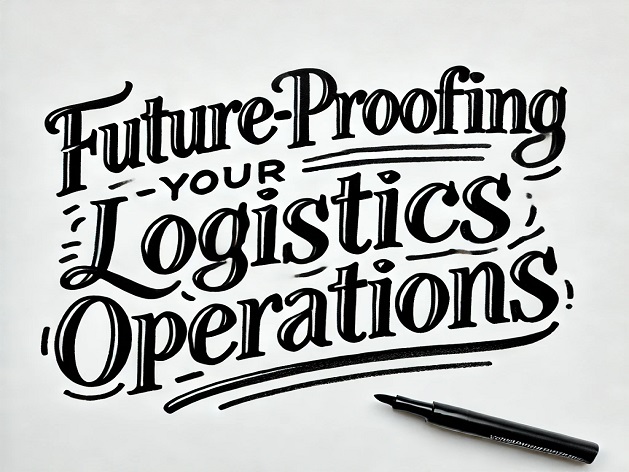Designing a 3PL Warehouse
In today’s competitive landscape, third-party logistics (3PL) providers are crucial partners for businesses seeking efficient warehousing and distribution solutions. The design of a 3PL warehouse is critical to its performance, directly impacting customer satisfaction, operational efficiency, and profitability. When constructing a 3PL warehouse, there are several key considerations to keep in mind to ensure your facility meets the demands of modern logistics.
1. Location and Accessibility
Location is one of the most important factors when designing a 3PL warehouse. Proximity to major transportation hubs—such as highways, railways, ports, or airports—plays a critical role in reducing transportation costs and ensuring quick delivery times. Consider areas with access to skilled labor and local infrastructure, such as utilities and security. A strategically located warehouse minimizes lead times and enhances supply chain agility, allowing faster deliveries and smoother operations.
2. Warehouse Layout
The warehouse layout should be designed to maximize the use of available space while ensuring efficient workflow. Some of the considerations include:
- Storage Requirements: Decide whether you will handle pallets, bulk goods, or small individual items. This determines the type of shelving, racks, or storage solutions you need.
- Receiving and Shipping Areas: Designated areas for loading and unloading should be strategically placed to avoid bottlenecks.
- Flow of Goods: A well-designed flow reduces movement within the warehouse. A common setup is a U-shaped flow for inbound-to-outbound goods or a straight-through layout for high-volume operations.
3. Scalability and Flexibility
As your 3PL warehouse will likely serve multiple clients, flexibility is key. The facility must accommodate fluctuating storage needs as client demands change. Modular shelving systems and movable racking allow easy reconfiguration to meet shifting requirements. Similarly, leave room for expansion, ensuring you can increase storage capacity, add loading docks, or incorporate new technology without disrupting daily operations.
4. Technology Integration
Today’s 3PL warehouses rely heavily on technology to optimize operations. When planning your warehouse, consider:
- Warehouse Management Systems (WMS): A good WMS helps streamline inventory tracking, order fulfillment, and warehouse workflow. It is essential for real-time data collection and accurate reporting.
- Automation: Automated storage and retrieval systems (AS/RS), conveyors, and robotics improve efficiency, reduce errors, and lower labor costs. These technologies can handle repetitive tasks, freeing up workers for more complex duties.
- Internet of Things (IoT): IoT-enabled devices allow real-time tracking of inventory, equipment health, and environmental conditions (temperature, humidity, etc.) to optimize storage for sensitive products.
5. Safety and Compliance
Ensuring safety for workers and compliance with local and international regulations is a non-negotiable priority. Design your warehouse to meet safety standards, which include fire protection systems, proper ventilation, adequate lighting, and clear signage. Key areas to focus on:
- Safe Equipment Operation: Adequate space for forklifts, clear pathways, and strict adherence to load-bearing limits.
- Employee Safety: Ergonomically designed workstations, safety gear for employees, and easy access to emergency exits.
- Compliance: Follow industry standards for hazardous materials, food-grade storage, or specialized goods as per the nature of your clients’ products.
6. Energy Efficiency and Sustainability
A growing number of 3PL providers are adopting sustainable practices. Energy-efficient lighting, such as LED, solar panels, and optimized heating and cooling systems, can drastically reduce long-term operational costs. Additionally, using green materials for construction and implementing waste-reduction practices (like recyclable packaging) contribute to the warehouse’s overall sustainability goals.
7. Labor Management
Labor costs are often one of the largest expenses in warehouse operations. Plan your workforce requirements early on and ensure that the layout and design support efficient labor use. Consider automation to reduce reliance on manual tasks, and ensure employees have easy access to tools and materials to reduce downtime. Designing ergonomic workstations can also minimize injuries and increase productivity.
8. Security Measures
Protecting the inventory stored in your warehouse is crucial for the trust and satisfaction of your clients. Install security systems such as surveillance cameras, access control systems, and alarm systems. Secure loading docks and ensure the warehouse perimeter is fenced or protected to prevent unauthorized access.
9. Future-Proofing
The logistics industry is evolving rapidly, with growing demands for faster deliveries, more efficient supply chains, and more sustainable practices. When designing your 3PL warehouse, plan with the future in mind. This includes ensuring adaptability to technological advancements, potential expansions, and changes in consumer behavior, such as increased eCommerce activity.
Conclusion
Designing a 3PL warehouse requires careful planning, strategic decision-making, and consideration of both current and future needs. By focusing on location, layout, scalability, technology, safety, and efficiency, you can build a warehouse that meets the dynamic demands of your clients while optimizing operational success. Investing time and resources in these key considerations will help ensure that your 3PL warehouse becomes a high-performing, competitive asset in the logistics industry.


